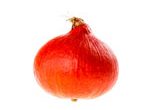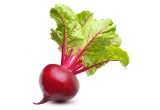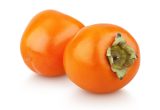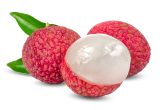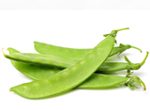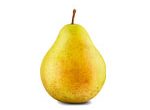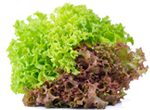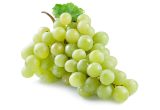Basil

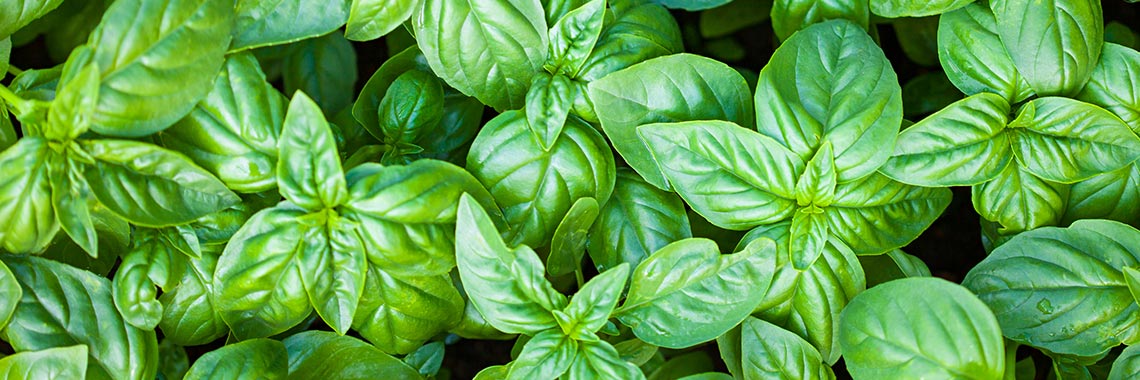
Description
- Basil (Ocimum basilicum) belongs to the Lamiaceae family.
- It is a culinary plant that is widely used as a flavouring agent in a broad variety of fields (Shirazi, 2014).
- This aromatic plant can be grown as an annual or perennial depending on the region where it is cultivated (da Costa, 2014).
PHYSICAL AND ORGANOLEPTIC CHARACTERISTICS
- The stems grow up to 1 m high and are strongly branched.
- The leaves vary in size from 1 to 4 cm long and from 1.85 to 9.25 cm wide. They are stalked, opposite, oval, and notched with green or purple (da Costa, 2014).
- Chlorophyll is responsible for the green colour of basil, but basil also contains significant amounts of other pigments such as carotenoids and flavones (nevadensin, salvigenin, and gardenin B) (Torre, 2016).
- Some varieties of basil, such as Ocimum basilicum var. purpurascens, have a purple colour due to the presence of anthocyanins (Fernandes, 2019).
- Linalool, nerol, geraniol and eugenol, from the terpene family, are thought to be responsible for the fresh flavour of basil (Jordán, 2017).
- Other terpenes and phenylpropanoids are also involved in the flavour of this culinary herb. The most abundant are the monoterpenes linalool and 1,8-cineole, the sesquiterpenes α-bergamotene and α-farnesene, and the phenylpropenes eugenol, estragol, (Z)-methyl cinnamate, methyl eugenol and isoeugenolol (Carvalho, 2016).
- Among the 18 active flavours detected, in addition to terpenes, we find aldehydes (3), ketone (1), phenol (1), alcohol (1) and unknown compounds (2) (Sonmezdag, 2018).
COMPOSITION CHARACTERISTICS (excluding macronutrients, vitamins and minerals)
- Basil leaf is an important source of polyphenols, the main ones being rutin, isoquercetin, quercetinin and ρ-coumaric acid (Vlase, 2014).
- Basil is also high in rosmarinic acid (RA), a phenolic compound that gives it antioxidant properties, and which is found in 1.64 times higher levels in green basil leaves than in purple ones. This phenolic acid has, in particular, anti-mutagenic, antibacterial, antiviral, anti-inflammatory and anti-allergic properties (Kwon, 2019).
- Basil may have health benefits such as antihypertensive, anti-ageing, anticancer, antiviral, antifungal, and antimicrobial effects (Kwon, 2019).
- Phenolic compounds, including rosmarinic acid, and ethanol contained in basil are believed to have anticancer properties, particularly on head and neck cancer cells, by inhibiting their growth (Utispan, 2020).
- The volatile compounds present in basil may have antioxidant, anti-allergic, antimicrobial, antifungal, anti-proliferative and immunostimulant properties (Carvalho, 2016).
FRESH
The following values are approximate and depend on variety, season, ripeness, cultivation conditions, etc. Basil is low in energy* as it provides an average of 34.80 kcal per 100 g or 145 kJ. However, it is used as a flavouring, so such a quantity is rarely consumed. Therefore, for a 5 g portion, basil contains 1.74 calories (kcal), i.e. 7.25 kJ.
COMPOSITION TABLES
For each nutrient, the tables provide information on the content, minimum and maximum values for 100 g net of fresh basil, while the percentage of the Dietary Reference Values (DRVs) is calculated for 5 g.*
Regulation (EC) No 1924/2006 of the European Parliament and of the Council of 20 December 2006 on nutrition and health claims made on foods.
MACRONUTRIENTS
DRV% * :
For a portion of 5 g.
Constituent
(g)
Average content
per 100g
Min-Max
per 100g
Average content
per 5g
DRV% *
Water
91,70
90,50 - 93,20
4,59
-
Fibers
3,47
1,40 - 4,50
0,17
-
Carbohydrates
2,55
2,50 - 2,60
0,13
0,05
Sugars
0,37
0,30 - 0,40
0,02
0,02
Lipids
0,47
0,30 - 0,67
0,02
0,03
Saturated fat
0,13
0,041 - 0,60
0,01
0,03
Protein
3,35
2,30 - 3,76
0,17
0,34
Constituent
(g)
Amount
Min-Max
DRV%
Water
Ciqual 2020
-
-
Fibers
Ciqual 2020
-
-
Carbohydrates
Ciqual 2020
-
Règlement (UE) N°1169/2011 du parlement Européen et du conseil du 25 octobre 2011
Sugars
Ciqual 2020
-
Règlement (UE) N°1169/2011 du parlement Européen et du conseil du 25 octobre 2011
Lipids
Ciqual 2020
-
Règlement (UE) N°1169/2011 du parlement Européen et du conseil du 25 octobre 2011
Saturated fat
Ciqual 2020
-
Règlement (UE) N°1169/2011 du parlement Européen et du conseil du 25 octobre 2011
Protein
Ciqual 2020
-
Règlement (UE) N°1169/2011 du parlement Européen et du conseil du 25 octobre 2011
Zoom on carbohydrates
- Its carbohydrate content is 0.13 g for a 5 g portion, i.e. 2.55 g per 100 g, which is below the average content found in herbs: approximately 7.85 g per 100 g.
- Basil can be said to be “sugar-free*” as it contains less than 0.50 g per 100 g, i.e. 0.37 g.
Zoom on fibres
- For one serving of fresh basil (5 g), the amount of fibre is 0.17 g.
Zoom on proteins
- For a 5 g serving, fresh basil contains 0.17 g of protein.
- The amount of protein present in 100 g of basil (3.35 g) is lower than the average value present in aromatic herbs (4.22 g per 100 g).
Zoom on lipids
- Basil is fat-free* because its quantity of fat is less than 0.50 g per 100 g.
*Regulation (EC) No 1924/2006 of the European Parliament and of the Council of 20 December 2006 on nutrition and health claims made on foods.
MINERALS AND TRACE ELEMENTS
DRV% * :
For a portion of 5 g.
Constituent
Average content
per 100g
Min-Max
per 100g
Average content
per 5g
DRV% *
Calcium
(mg)
273
143 - 369
13,65
1,71
Chloride
(mg)
-
-
-
-
Copper
(mg)
0,39
0,20 - 0,48
0,02
1,95
Iron
(mg)
5,24
3,17 - 7,30
0,26
1,87
Iodine
(µg)
-
-
-
-
Magnesium
(mg)
64
47 - 82
3,20
0,85
Manganese
(mg)
1,15
0,85 - 1,58
0,06
2,88
Phosphorus
(mg)
56
43 - 72
2,80
0,40
Potassium
(mg)
295
128 - 565
14,75
0,74
Selenium
(µg)
-
-
-
-
Sodium
(mg)
12
3 - 20
0,60
-
Zinc
(mg)
0,81
0,53 - 1,17
0,04
0,41
Constituent
Amount
Min-Max
DRV%
Calcium
(mg)
Ciqual 2020
-
Règlement (UE) N°1169/2011 du parlement Européen et du conseil du 25 octobre 2011
Chloride
(mg)
Ciqual 2020
-
Règlement (UE) N°1169/2011 du parlement Européen et du conseil du 25 octobre 2011
Copper
(mg)
Ciqual 2020
-
Règlement (UE) N°1169/2011 du parlement Européen et du conseil du 25 octobre 2011
Iron
(mg)
Ciqual 2020
-
Règlement (UE) N°1169/2011 du parlement Européen et du conseil du 25 octobre 2011
Iodine
(µg)
Ciqual 2020
-
Règlement (UE) N°1169/2011 du parlement Européen et du conseil du 25 octobre 2011
Magnesium
(mg)
Ciqual 2020
-
Règlement (UE) N°1169/2011 du parlement Européen et du conseil du 25 octobre 2011
Manganese
(mg)
Ciqual 2020
-
Règlement (UE) N°1169/2011 du parlement Européen et du conseil du 25 octobre 2011
Phosphorus
(mg)
Ciqual 2020
-
Règlement (UE) N°1169/2011 du parlement Européen et du conseil du 25 octobre 2011
Potassium
(mg)
Ciqual 2020
-
Règlement (UE) N°1169/2011 du parlement Européen et du conseil du 25 octobre 2011
Selenium
(µg)
Ciqual 2020
-
Règlement (UE) N°1169/2011 du parlement Européen et du conseil du 25 octobre 2011
Sodium
(mg)
Ciqual 2020
-
-
Zinc
(mg)
Ciqual 2020
-
Règlement (UE) N°1169/2011 du parlement Européen et du conseil du 25 octobre 2011
Zoom on minerals and trace elements
- For one portion of basil (5 g), the minerals and trace elements are present in quantities representing less than 3% of DRVs.
VITAMINS
DRV% * :
For a portion of 5 g.
Constituent
Average content
per 100g
Min-Max
per 100g
Average content
per 5g
DRV% *
Provitamin A Beta-carotene
(µg)
3 140
350 - 4820
157
-
Vitamin A equivalent
(µg)
523,33
58,33 - 803,33
26,17
3,27
Vitamin B1
(mg)
0,034
0,008 - 0,045
0
0,15
Vitamin B2
(mg)
0,076
0,047 - 0,099
0
0,27
Vitamin B3
(mg)
0,90
0,79 - 1,06
0,05
0,28
Vitamin B5
(mg)
0,21
0,18 - 0,29
0,01
0,18
Vitamin B6
(mg)
0,16
0,13 - 0,18
0,01
0,57
Vitamin B9
(µg)
68
57 - 73
3,40
1,70
Vitamin C
(mg)
14,50
11 - 18
0,73
0,91
Vitamin E
(mg)
0,80
-
0,04
0,33
Vitamin K1
(µg)
415
-
20,75
27,67
Constituent
Amount
Min-Max
DRV%
Provitamin A Beta-carotene
(µg)
Ciqual 2020
-
-
Vitamin A equivalent
(µg)
Calcul à partir de la valeur Provitamine A Béta-carotène*
-
Règlement (UE) N°1169/2011 du parlement Européen et du conseil du 25 octobre 2011
Vitamin B1
(mg)
Ciqual 2020
-
Règlement (UE) N°1169/2011 du parlement Européen et du conseil du 25 octobre 2011
Vitamin B2
(mg)
Ciqual 2020
-
Règlement (UE) N°1169/2011 du parlement Européen et du conseil du 25 octobre 2011
Vitamin B3
(mg)
Ciqual 2020
-
Règlement (UE) N°1169/2011 du parlement Européen et du conseil du 25 octobre 2011
Vitamin B5
(mg)
Ciqual 2020
-
Règlement (UE) N°1169/2011 du parlement Européen et du conseil du 25 octobre 2011
Vitamin B6
(mg)
Ciqual 2020
-
Règlement (UE) N°1169/2011 du parlement Européen et du conseil du 25 octobre 2011
Vitamin B9
(µg)
Ciqual 2020
-
Règlement (UE) N°1169/2011 du parlement Européen et du conseil du 25 octobre 2011
Vitamin C
(mg)
Ciqual 2020
-
Règlement (UE) N°1169/2011 du parlement Européen et du conseil du 25 octobre 2011
Vitamin E
(mg)
Ciqual 2020
-
Règlement (UE) N°1169/2011 du parlement Européen et du conseil du 25 octobre 2011
Vitamin K1
(µg)
Ciqual 2020
-
Règlement (UE) N°1169/2011 du parlement Européen et du conseil du 25 octobre 2011
Zoom on vitamins
- Basil is a source of vitamin K1, as it provides the equivalent of 27.67% of DRVs, i.e. 20.75 µg for a 5 g portion.
- For one portion of basil (5 g), the other vitamins are present in quantities representing less than 4% of DRVs.
*Calculation made: Beta-Carotene / 6 + retinol
POLYPHENOLS
Constituent
(mg)
Average content
per 100mg
Min-Max
per 100mg
Average content
per 5mg
Total polyphenols
231,8
223 - 234
11,59
Constituent
(mg)
Amount
Min-Max
Total polyphenols
Phenol-Explorer 3.6 Méthode utilisée : Folin assay
-
Zoom on polyphenols
- Polyphenols are substances with an antioxidant effect.
- According to the Folin assay, fresh basil contains a significant amount of polyphenols.
Nutrition and health claims
According to the definitions of nutrition claims as presented in Regulation (EC) No 1924/2006 on nutrition and health claims, and in view of the composition of fresh basil, the following claims may be used:
Nutrition claims of fresh basil
- Low in energy (100 g of fresh basil provide less than 40 kcal)
- Sugar-free (100 g of fresh basil contain no more than 0.5 g of sugar)
- Fat-free (100 g of fresh basil contain no more than 0.5 g of fat)
- Source of vitamin K1 (5 g of basil provide the equivalent of more than 15 % of DRVs)
HEALTH CLAIMS (for a consumption of 5 g of basil)
Vitamin K1
- Vitamin K1 contributes to:
- maintenance of normal bones,
- normal blood clotting.
References
-
Agence nationale de sécurité sanitaire de l’alimentation, de l’environnement et du travail. Table de composition nutritionnelle des aliments Ciqual 2020. Consultée le 27/07/2020 depuis le site internet Ciqual https://ciqual.anses.fr/
- Barreira JC, Pereira JA, Oliveira MB, Ferreira JC. Sugars profiles of different chestnut (Castanea sativa Mill.) and almond (Prunus dulcis) cultivars by HPLC-RI. Plant Foods Hum Nutr. 2010;65(1):38-43.
- Carvalho SD, Schwieterman ML, Abrahan CE, Colquhoun TA, Folta KM. Light Quality Dependent Changes in Morphology, Antioxidant Capacity, and Volatile Production in Sweet Basil (Ocimum basilicum). Frontiers in Plant Science. 2016;7:1328.
- da Costa AS, Arrigoni-Blank Mde F, da Silva MA, Alves MF, Santos Dde A, Alves PB, Blank AF. The impact of hybridization on the volatile and sensorial profile of Ocimum basilicum L. ScientificWorldJournal. 2014;2014:824594.
- Fernandes F, Pereira E, Prieto MA, Calhelha RC, Ćirić A, Soković M, et al. Optimization of the Extraction Process to Obtain a Colorant Ingredient from Leaves of Ocimum basilicum var. purpurascens. Molecules (Basel, Switzerland). 2019;24(4):686.
- Jordán MJ, Quílez M, Luna MC, Bekhradi F, Sotomayor JA, Sánchez-Gómez P, et al. Influence of water stress and storage time on preservation of the fresh volatile profile of three basil genotypes. Food Chemistry. 2017;221: 169–77.
- Kwon DY, Li X, Kim JK, Park SU. Molecular cloning and characterization of rosmarinic acid biosynthetic genes and rosmarinic acid accumulation in Ocimum basilicum L. Saudi Journal of Biological Sciences. 2019;26(3):469-72.
- Neveu V, Perez-Jiménez J, Vos F, Crespy V, du Chaffaut L, Mennen L, Knox C, Eisner R, Cruz J, Wishart D, Scalbert A. (2010) Phenol-Explorer: an online comprehensive database on polyphenol contents in foods. Database, doi: 10.1093/database/bap024. Full text (free access)
- Règlement (CE) N° 1924/2006 du Parlement européen et du Conseil du 20 décembre 2006 concernant les allégations nutritionnelles et de santé portant sur les denrées alimentaires.
- Règlement (UE) N°432/2012 de la Commission du 16 mai 2012 établissant une liste des allégations de santé autorisées portant sur les denrées alimentaires, autres que celles faisant référence à la réduction du risque de maladie ainsi qu’au développement et à la santé infantiles.
- Règlement (UE) n°1169/2011 du Parlement européen et du Conseil du 25 octobre 2011 concernant l’information des consommateurs sur les denrées alimentaires, modifiant les règlements (CE) n°1924/2006 et (CE) n°1925/2006 du Parlement européen et de Conseil et abrogeant la directive 87/250/CEE de la Commission, la directive 90/496/CEE du Conseil, la directive 1999/10/CE de la Commission, la directive 200/13/CE du Parlement européen et du Conseil, les directives 2002/67/CE et 2008/5/CE de la Commission et le règlement (CE) n°608/2004 de la Commission.
- Shirazi MT, Gholami H, Kavoosi G, Rowshan V, Tafsiry A. Chemical composition, antioxidant, antimicrobial and cytotoxic activities of Tagetes minuta and Ocimum basilicum essential oils. Food Sci Nutr. 2014;2(2):146-55.
- Sonmezdag AS, Amanpour A, Kelebek H, Selli S. The most aroma-active compounds in shade-dried aerial parts of basil obtained from Iran and Turkey. Industrial Crops and Products. 2018;124:692–8.
- Torre S, Tattini M, Brunetti C, Guidi L, Gori A, Marzano C, et al. De Novo Assembly and Comparative Transcriptome Analyses of Red and Green Morphs of Sweet Basil Grown in Full Sunlight. PloS One. 2016;11(8): e0160370.
- Utispan K, Niyomtham N, Yingyongnarongkul, Koontongkaew S. Ethanolic Extract of Ocimum sanctum Leaves Reduced Invasion and Matrix Metalloproteinase Activity of Head and Neck Cancer Cell Lines. Asian Pacific journal of cancer prevention: APJCP. 2020; 21(2): 363-70.
- Vlase L, Benedec D, Hanganu D, Damian G, Csillag I, Sevastre B, Mot AC, Silaghi-Dumitrescu R, Tilea I. Evaluation of antioxidant and antimicrobial activities and phenolic profile for Hyssopus officinalis, Ocimum basilicum and Teucrium chamaedrys. Molecules. 2014;19(5):5490-507.




